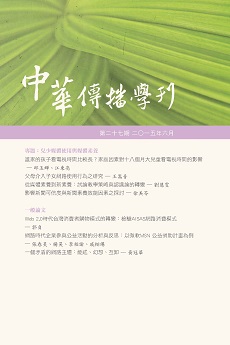 閱覽人數: 4249
閱覽人數: 4249
June
2015
No. 27
兒少媒體使用與媒體素養
Young Adolescent Media Use and Media Literacy頁數:139 - 165
作者(中)
郭貞
作者(英)
Cheng Kuo
關鍵詞(中)
消費傾向、商品資訊搜尋、網路口碑行銷、網路購物、線上購物
關鍵詞(英)
shopping orientations, searching for product information, online word of mouth marketing, internet shopping, online shopping
中文摘要
進入Web 2.0 時代,上網搜尋與分享消費資訊已成為消費者的日常習慣。本研究以實證資料檢驗了以日本電通廣告公司(dentsu)提出的AISAS 為藍本的網路消費模式。從資料分析結果顯示如今網購者女性多於男性,40 歲以下的民眾比年長族群多。上網搜尋商品資訊與使用SNS 分享指標對於網上交易購買頻率都呈現相當顯著的正向推力,AISAS 模式中強調的搜尋與分享均具有關鍵效益的假設得到支持,但是研究結果並不能區分二者的先後順序。四個購物傾向都對偏愛網購傾向有影響,但是只有便利至上傾向會直接提升網購頻率。
英文摘要
In the era of Web 2.0, searching and sharing product information online have become the daily habits of numerous consumers. This study investigated the AISAS model of consumer behavior that Dentsu proposed. Analyses of data indicated that women and younger generations are more likely to shop online. In addition, the two S’s in AISAS, namely, searching and sharing, were found to contribute positively to online
shopping behavior. However, the sequential order of these two S’s cannot be determined through the study. All of the four consumer orientations
were found to significantly influence attitudes toward online shopping, nevertheless, only convenience seems to directly lead to more frequent online shopping behavior.
shopping behavior. However, the sequential order of these two S’s cannot be determined through the study. All of the four consumer orientations
were found to significantly influence attitudes toward online shopping, nevertheless, only convenience seems to directly lead to more frequent online shopping behavior.